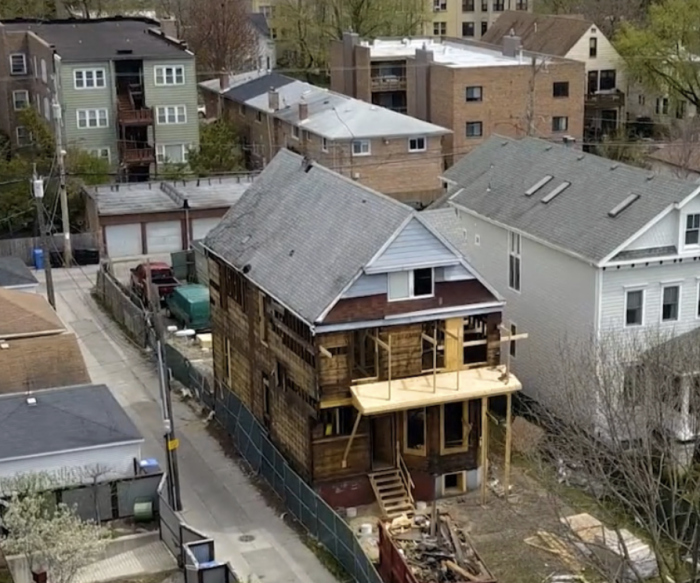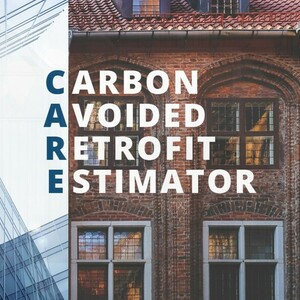
If we are intent on being good stewards of our environment, then we must likewise be responsible stewards of what we have already built. We are at an inflection point. According to the latest EPA figures, existing buildings contribute 30% of global energy consumption and 26% of energy-related GHG emissions (8% from direct operational emissions and 18% from indirect sources, including heating and fossil fuel–generated power production). That comprises a mighty big kink in our armor. Now, the latest energy conservation codes (and stretch codes) being adopted in one state to the next are doing their part to ensure new construction will offset a portion of that, and timely developments like the White House and EPA announcing $20 billion in awards for clean energy investments across a range of sectors are encouraging, to say the least. But if a heavily decarbonized future is anywhere near attainable, we must decarbonize what’s already on our books, homes and all.
An updated retrofit standard for homeowners
With this knowledge well in hand, the non-profit organization Phius recently debuted an update to its retrofit standard for buildings, Phius REVIVE 2024. (The public comment period concluded on March 31.) This iteration of the standard is first and foremost “guided by resilience,” according to engineer and Phius project certifier Al Mitchell, who sat on the standard’s development team. A lot of what’s being proposed and rolled out, such as widespread renewable energy production, “is very much beneficial on a national scale,” he says, “but probably not beneficial to individual owners of buildings.”
Mitchell outlines a familiar scenario in which a homeowner, occupying an otherwise inefficient home, swaps out a boiler for a heat pump and installs new windows. “But that will increase demand on the grid significantly,” he says, and yield little to no energy savings, dollar for dollar. This latest REVIVE standard, according to Mitchell, looks at “thermal resilience as the guiding metric.” He defines that as “a building’s ability to maintain habitable conditions during a power disruption,” and backs that up with a simple and sobering proposition: “Is my building going to keep me alive and prevent me from dying of hypo- or hyperthermia?”
Electrifying our homes has grown into a huge business concern of late. Roving bands of HVAC contractors are out there distributing fliers and making ad-buys on Facebook, touting the latest and greatest in heat pumps, water heaters, and more. For its part, Phius supports said measures, but cautions against seeing them as the end goal. The new REVIVE standard encourages adopting a phased approach, short and streamlined. Reducing energy loads through passive design means is top of list, says Mitchell. “Do all of the envelope and air-sealing and load reduction work first. All that needs to get done before switching mechanical systems to all-electric.”
The desired cost-benefit ratio for homeowners is a retrofitted building with low upfront emissions, relatively low upfront costs that are easier to incur, and a home that is both comfortable for its inhabitants and places very little demand on the electric grid, if any at all.
Prescriptive pathways
“My walls are leaky. I live in a cold climate. I have a gas furnace. I burn a lot of energy.” When Mitchell weaves hypotheticals, he doesn’t mince words. He also, in this instance, sums up the (almost) exact conditions of my own home in Maine. (Just replace gas with oil.) There is a lot I want to change. I have done the rough numbers in my head, and a deep-energy retrofit of my own suburban rambler is doable, but whenever I look for a starting point, I lose the forest through the trees. New windows? Sure, seems like a reasonable place to start. Vault the ceilings, re-route the ductwork, and reinsulate the roof? On second thought, yeah let’s go big! But those are strictly logistical matters and don’t account for other considerations like material sourcing, supply chains, and the dreaded life-cycle costs.
Mitchell describes REVIVE 2024 as a “decision tool” to speed up the retrofitting process, while carefully blending interrelated concerns over electrification, resilience measures, and life-cycle cost analysis. For homeowners and builders opting to pursue the standard, they have access to the ADORB (Annualized Decarbonization of Retrofitted Building) life-cycle cost calculator, developed by Phius to be paired with REVIVE, that according to the site Passive House Accelerator, “weighs the embodied carbon cost of retrofit measures against the building’s annual carbon emissions from relying on the electric grid.” In other words, your ADORB cost provides a prescriptive breakdown of the types of upgrades that will achieve the desired resiliency benchmarks for your building at the lowest possible cost.
For a more detailed breakdown, Phius computes ADORB costs using the following components, each annualized:
- Direct energy cost. E.g. site kWh * $/kWh = $
- Direct building retrofit measures cost (material & labor) including building-level electrification cost. E.g. ft3 of stuff * $/ft3 = $
- Social cost of carbon, upfront/embodied. CO2e kg * $/kg = $
- Social cost of carbon, operating. CO2e kg * $/kg = $
- Energy system transition cost (e.g. new utility solar + storage). $/MWh * MWh = $
“If people are doing any type of custom assembly or anything like that, we have them calculate their embodied carbon for that assembly,” Mitchell says. To that end, he recommends using the BEAM Estimator, a free tool for measuring the upfront emissions of materials associated with any new build or retrofit project.
Additional insurance comes in the form of third-party commissioning, which is based on ASHRAE guidelines. This can prove particularly helpful for homeowners who choose to implement multi-phase retrofits, which suffice it to say is most homeowners. Adopting a simplified and patient approach is also essential given the skilled labor shortage in the construction and homebuilding arena.
The secret to success, according to Mitchell, is a distilled process. Better allocation of resources and labor, better streamlining, and better commissioning. “There are a lot of buildings, and all of them need to get retrofitted, for the most part,” Mitchell says. “If we want to retrofit everything as fast as we scientifically should, then we need to be sensitive of [the limited resources]. Just like how we’re not dumping a lot of spray foam into the building on day one, we can’t expect to have a hundred guys on a single-family home project on day one either.”
_______________________________________________________________________
Justin R. Wolf is a Maine-based writer who covers green building trends and energy policy.
Weekly Newsletter
Get building science and energy efficiency advice, plus special offers, in your inbox.















6 Comments
I have to say, the acronym "ADORB" is.. adorable.
Indeed it is. As such, not the easiest acronym to google (unless you like puppies).
And a long overdue thanks to Phius for taking what had become a hide-bound standard and making it increasingly relevant to the where we live and the conditions we find ourselves in.
Is that picture showing site-built scaffolding that is held up by the porch roof, and the porch roof is held up by two posts at one end and a single 2x4 at the other?
Oof.
DC,
A diagonal single 2"x4"...
With what, three nails in each end?
Log in or create an account to post a comment.
Sign up Log in